foot surgery issaquah
Displaying items by tag: foot surgery issaquah
Dr Brandon Nelson, A Double Board-Certified Physician & Surgeon, Discusses Patients Decide to Have Bunion Surgery

Bunions form on the big toe and are caused by a rotational malalignment of the 1st metatarsal. They are usually inherited and can get bigger with time. Many people will begin to find it difficult to wear shoes, exercise and walking will become painful. I will discuss why many people decide to have bunion surgery below.
Reduction of Pain/Discomfort
This is the most common reason patients seek to have bunion surgery. Many experience pain with walking every day. This can make even going to the store challenging. The bunion gets bigger with time and creates more inflammation in the foot. The surgery aims to realign the foot and reduce bunion pain.
Preventing Further Progression
Many know this well, but your bunion grows and the bone shifts farther out of place. This can lead to other issues like hammer toes, flatfeet, and arthritis. The goal of surgery is to stop the bunion from increasing in size and prevent the bunion from preventing more severe foot complications.
Improving Foot Function
Bunions cause significant foot impairments and function. This makes things like running and exercise difficult. Surgery not only helps fix the appearance of the foot but the overall function. The goal is to restore anatomical alignment and help the foot function in a more natural state.
Newer Techniques
It is important to know that bunion surgery is not a one size fits all. It should be customized to your foot structure. Newer techniques are available that decrease healing times and allow early ambulation.
Bunion surgery should not be taken lightly. You should seek a skilled bunion surgeon and have questions ready to ask your surgeon. If you would like a consultation for your bunion I can help. Call to make an appointment with me at 425-391-8666 or make an appointment online.
Sincerely,
American College of Foot & Ankle Surgeons
Issaquah’s Top Podiatrist & Bunion Surgeon
Dr. Timothy Young, a Board-Certified Foot Surgeon discusses: Understanding Why Bunions Can Reoccur.
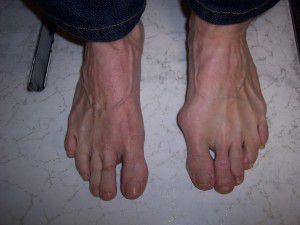
Bunions are a common foot condition that can cause pain, discomfort, and difficulty with footwear. They typically develop when the joint at the base of the big toe becomes misaligned, leading to a bony bump on the side of the foot. Although surgical correction can provide relief for many individuals, some individuals may find that their bunions come back or reoccur over time. Understanding the factors that contribute to bunion recurrence can help individuals take steps to prevent this from happening.
1. Genetics and Foot Structure
One of the primary reasons bunions can reoccur is because of genetics and foot structure. Some individuals are predisposed to developing bunions because of inherited foot shapes or structural conditions. Even after surgical correction, the underlying foot structure is still there and may still contribute to the gradual return of the bunion over time. A perfect example this is a juvenile onset bunion. We see patients who are teenagers who already have quite pronounced bunions. In this case they certainly inherited foot structure that makes them highly prone to this. This is commonly due to an underlying foot structure called metatarsus adductus. Pronation is another foot structure that is prone to bunions. The combination can be especially challenging, a pronated foot with metatarsus adductus.
2. Improper Footwear
Wearing tight, pointed, or high-heeled shoes can exacerbate bunion formation and contribute to their recurrence. These types of footwear by raising the heel cause extra pressure on the entire forefoot and place excessive pressure on the toes and can force the big toe joint out of alignment. Even after surgery, if individuals continue wearing these type of shoes, it can increase the likelihood of bunions coming back.
3. Post-Surgical Care
Proper post-surgical care is critical for preventing bunion recurrence. Following your surgeon's instructions regarding activity levels, wearing orthotic devices or splints, and attending follow-up appointments is essential. Failure to adhere to post-operative care guidelines can increase the risk of the bunion returning.
4. Joint Instability
In some cases, joint instability can contribute to bunion recurrence. This may occur if the surgical correction did not adequately address underlying joint laxity or if there are other issues with the foot structure and foot biomechanics. Physical therapy and exercises to strengthen the foot and improve stability can be beneficial in these situations. Note that in example this would be a round first metatarsal head with laxity of the underlying capsule and ligaments.
5. Lifestyle Factors
Certain lifestyle factors, such as obesity or activities that place repetitive stress on the feet, can also contribute to bunion recurrence. Excess weight can put additional strain on the feet and exacerbate bunion formation. Similarly, activities that involve repeated bending or pressure on the toes can lead to joint misalignment over time.
6.
Surgical factors: when I see patients who come in for a 2nd opinion and have had surgery previously and there has been recurrence, I look to see how much correction was done initially. Sometimes there is a lack of adequate correction from the beginning and this creates a higher risk of recurrence. It is important to fully correct the bunion whenever possible. For example a juvenile onset bunion needs the most corrective surgery possible because they are so prone to reoccurrence. This often means a Lapiplasty or similar procedure. Another example would be a lack of adequate release of the soft tissue at the great toe joint. It is very important that after surgery the great toe joint lines up correctly and the big toe doesn't want to pull to the side toward the 2nd toe. If the soft tissue capsule is not adequately released this can be a problem.
Preventing Bunion Recurrence
While some factors contributing to bunion recurrence are beyond individual control, there are steps individuals can take to reduce the risk:
Choose Proper Footwear: Opt for shoes with a wide toe box, low heels, and adequate arch support to reduce pressure on the toes. Hold off on the really dressy shoes except for special occasion like a wedding or a special dinner out. And even then avoid a really high heel shoe.
Maintain a Healthy Weight: Maintaining a healthy weight can alleviate strain on the feet and joints.
Follow Post-Surgical Care Guidelines: Adhere to your surgeon's recommendations for post-operative care, including wearing orthotics and attending follow-up appointments.
Monitor Foot Health: Regularly check your feet for any signs of bunion recurrence or other foot issues, and seek medical attention if necessary.
Consider Conservative Treatments: In some cases, conservative treatments such as orthotics, padding, and physical therapy may help prevent bunion recurrence or delay its progression.
For those very high-risk patients using a "retainer" similar to a dental retainer can be used to help maintain the alignment of the great toe and keep it from drifting toward the 2nd toe or at least really slow its progression.
Make sure to discuss this concern if you are in for a surgical consultation. If you would like a 2nd opinion or have additional questions and would like consultation at our clinic, I would be happy to provide this consultation.
By understanding the factors that contribute to bunion recurrence and taking proactive measures, individuals can help reduce the likelihood of experiencing this common foot problem again in the future.
If you have any questions or would like a consultation please call 425-391-8666 and make an appointment online.
Dr. Timothy Young
Foot & Ankle Surgeon
Issaquah's Top Podiatrist
Dr. Brandon Nelson, A Board Certified Foot Physician & Surgeon, Issaquah’s Top Podiatrist, Discusses Why You Should Have Your Bunion Fixed
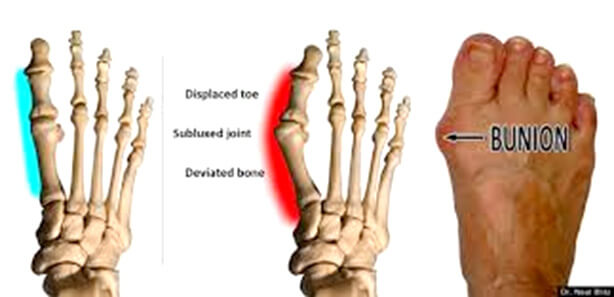
Bunions are one of the most common reasons people schedule an appointment with a foot and ankle surgeon. It is by far the most common surgical procedure I do. People of all ages and activity levels can have a bunion. The primary reason people schedule an appointment is difficulty fitting the shoes they would like to wear.
I think there are quite a few reasons to fix your bunions these days and I will discuss a few of the most beneficial reasons.
Bunions are an inherited foot disorder and are more common in women. They are usually the result of a foot that wants to flatten out too much or what we would call pronate. A bunion results when the first metatarsal tries to stabilize the medial arch. This results in the first metatarsal moving out of place and the bunion developing. Fixing a bunion can result in stabilization of the medial arch. This can have effects on the overall stability of the foot. I see patients that have had plantar fasciitis or other stability issues that resolve once the bunion is fixed.
2. Shoe Fit
Another big issue with bunions becomes an inability to fit in normal shoes. I see a lot of wide shoes and short extra depth shoes when people try to accommodate bunions and other toe deformities. It is often a relief to be able to have shoes fit again and get back to wearing the shoes you once enjoyed or liked after your toe is straightened.
3. Your Bunion Will Get Larger
Many people believe they can use straps or tape or toe straighteners and change their bunion. However, we know from long term data this is not true. There is no way to reverse your bunion without surgery. Everyone’s bunion with time and mileage will get bigger. I recommend having it fixed before it causes the 2nd toe to become a hammer toe or begins to cross over or under the 2nd toe.
If you have a bunion and want an evaluation schedule an appointment with me, or make an appointment online, I will help you.
Sincerely,
Board Certified Physician & Surgeon
Issaquah’s Top Podiatrist & Foot/Ankle Surgeon
Dr. Timothy Young a board-certified foot surgeon discusses Chillblains: causes, symptoms, and treatment.
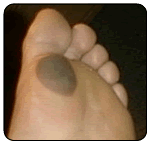
Introduction: As winter settles in, along with its frosty bite, many of us bundle up in layers of clothing to protect ourselves from the cold. Despite our efforts, some may still find themselves facing an uncomfortable and sometimes painful condition known as chillblains. Chillblains, also spelled chilblains, are a common affliction during colder months, yet they remain relatively misunderstood. Chilblains is the common term used for this and Pernio is the medical term for chilblains. Very similar conditions include Raynaulds phenomenon and acral cyanosis. In this blog post, we discussed the details of chillblains, exploring their causes, symptoms, and effective treatments.
What are Chillblains? Chillblains, medically termed pernio, are a localized reaction of the skin to cold temperatures. They occur when the skin is exposed to cold but not freezing temperatures and then undergoes rapid warming, causing blood vessels to expand and leak. This leakage leads to inflammation and injury to the surrounding tissues.
Causes of Chillblains: Chillblains typically develop in response to repeated exposure to cold, damp conditions. Individuals living in cold climates or those who spend prolonged periods outdoors during winter are at higher risk. Certain factors may predispose individuals to chillblains, including poor circulation, hormonal changes, and medical conditions such as Raynaud's disease.
Discussion: Vasospasm of the smaller blood vessels in the digits are common in this case pulses in the feet may be intact but despite this the blood flow to the digits is essentially cut off. With a lack of oxygen there can be tissue damage and resultant inflammation even after the blood flow is reestablished. It also can be common for the individual’s foot to be moist from perspiration such that a “damp chill” on the feet occurs. This is why one of the strategies is to keep the feet dry and wool socks do a great job with this. In addition in the toes if there is a place where the toes often rub together that seems to be a common location to get purple/cyanotic nodular enlargement and irritation from the contact between the toes. Patient will come into the clinic with these purple painful nodules on their toes and states that they been to other clinics and owns quite certain what it is. They commonly think that they started out as a blisters.
Symptoms of Chillblains: The symptoms of chillblains can vary in severity but commonly include:
- Redness or purplish discoloration of the skin
- Swelling and tenderness with nodular enlargement
- Itching or burning sensation
- Blistering or ulceration in severe cases, often these are purple or cyanotic.
- Pain or discomfort, particularly upon warming the affected area
Chillblains most commonly affect the extremities, such as the toes, fingers, ears, and nose, but can also appear on other parts of the body exposed to the cold.
Treatment and Management: While chillblains can be uncomfortable, they typically resolve on their own within a few weeks once the affected individual is no longer exposed to cold temperatures. It’s not uncommon for these to last often on through the winter and then totally resolved each summer. But as the years go by sometimes the become progressively more of a challenge or problem. However, several measures can help alleviate symptoms and promote healing:
- Keep the affected area warm but avoid sudden temperature changes.
- Gently massage the area to improve circulation.
- Apply soothing lotions or creams to relieve itching and discomfort.
- Avoid scratching or rubbing the affected skin to prevent further irritation.
- Protect the skin from further exposure to cold and moisture by wearing appropriate clothing and using gloves, socks, or earmuffs.
In more severe cases or if complications arise, medical intervention may be necessary. This may include prescription medications to reduce inflammation, promote healing, or manage underlying conditions contributing to poor circulation.
Prevention: Prevention is key to avoiding the discomfort of chillblains. Some tips to prevent chillblains include:
- Dress warmly in layers, paying particular attention to extremities.
- Keep indoor environments warm and dry, especially during colder months.
- Limit exposure to cold and damp conditions, and take breaks to warm up if spending extended periods outdoors.
- Wear moisture-wicking socks and breathable footwear to prevent moisture buildup.
- Maintain good circulation through regular exercise and avoiding tight-fitting clothing or accessories that may restrict blood flow.
Conclusion: Chillblains are a common but often misunderstood condition that can cause discomfort during colder months. By understanding the causes, symptoms, and effective treatment options, individuals can better manage and prevent chillblains, ensuring a more comfortable and enjoyable winter season. If symptoms persist or worsen, it's essential to seek medical advice for proper evaluation and treatment. Remember, staying warm and dry is key to keeping chillblains at bay.
If you have any questions or would like a consultation please call 425-391-8666 and make an appointment online.
Foot & Ankle Surgeon
Issaquah’s Top Podiatrist
Dr Brandon Nelson, A Board-Certified Physician & Surgeon Discusses Plantar Fasciitis
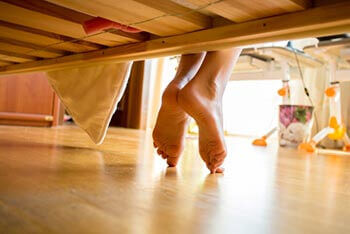
Plantar fasciitis affects millions of people worldwide. It is often a debilitating condition that limits people’s activities. It is characterized by pain in one’s heel, pain when we get out of bed or can even be a bruised sensation to the bottom of the foot. Today I will discuss some of the causes, symptoms, diagnosis, and treatment. The plantar fascia itself is a thick ligament like tissue that runs on the bottom of the foot to provide support.
Causes:
The number one cause is overuse. This can be exercise or standing all day or a change in the amount of either of these. Other causes can be shoe gear, weight or even the foot structure one is born with.
Symptoms:
The most common symptom is sharp heel pain, especially when you first get up from a seated position. This usually improves as we walk but returns at the end of the day. Some people experience stiffness or even burning.
Diagnosis:
A good clinical examination can help identify plantar fasciitis for most people. The is usually pain with palpation of the heel, specifically at the heel bone where the fascia attaches. An x-ray can be useful to detect bone spurs.
Treatment:
The mainstay of treatment is to work on stretching of the foot and Achilles. Additionally, increasing support for the feet can be helpful. Often by the time I see patients an injection is needed to calm down the inflammation and help with recovery.
If you would like a consultation on your heel pain, I can help. Call to make an appointment with me at 425-391-8666 or schedule an appointment online.
Sincerely,
Dr Brandon Nelson
American College of Foot & Ankle Surgeons
Dr Brandon Nelson, A Board Certified Physician & Surgeon, Discusses Bunion Surgery and Tips for Recovery
.jpg)
Dr. Brandon Nelson, A Board Certified Physician & Surgeon, Discusses Bunion Surgery and Tips for Recovery
Bunion surgery is one of the most common foot and ankle surgeries in the United States. On average I personally operate on around 100 bunions every year. It is a very rewarding surgery for patients with great outcomes. The hardest part is the recovery and I thought I would give some tips for patients that I have learned over the last 15 years. I will break this down into pain control, healing and rehab.
Pain control is essential for the first part of the surgical process. I find it beneficial for patients to be on a narcotic with an anti-inflammatory. I prefer Ibuprofen and usually only need any type of pain medication for the first couple days. Additionally, I recommend keeping your foot elevated for the first week and making sure to ice for 10 minutes every hour while you are awake.
Healing is another important factor for recovery. First bone healing this is usually the dictating factor for recovery. The average bone takes 12 weeks to heal so target therapy to decrease bone healing times can be helpful. I recommend always taking a bone healing supplement i.e. ProBono or Bone Up are two of my favorite over the counter supplements. Next would be skin and soft tissue, taking collagen, biotin and zinc can increase production of new skin cells. Once the wound has closed I like some sort of scar care cream or scar care product. You must use some sort of silicone based cream for best results.
Rehabilitation after bunion surgery often depends if other procedures were performed as well. Often times physical therapy can be helpful. I recommend that patients start moving their toes through range of motion as soon as the stitches are out. It is important to actively and passively move the toe joint to prevent stiffness. The ankle joint should be mobilized as well with such exercises as writing the alphabet with your foot multiple times a day. I hope you find these helpful.
If you are experiencing foot or ankle pain, please give us a call at 425-391-8666 or make an appointment online today.
Sincerely,
Dr Brandon Nelson, A Board Certified Physician & Surgeon, Discusses When to Get Bunion Surgery
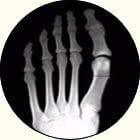
This is probably one of the most common questions I hear when patients come in for a consultation. I think this question is easy to answer, however does have a few details that need to be addressed. I think the most important details are family history, activity level and expectations.
Family history, most bunions have a family history component. There is usually a parent or grandparent that has had a bunion. I think of this as the future of one’s foot structure. Does a relative take off their shoe and all their toes are crossing over? Is there a history of other members having their bunions fixed? These are good questions to answer and can be helpful in deciding to fix your bunion.
Activity level is another important thing to consider. Are you having a hard time exercising due to the pain? Is it getting difficult to fit shoes or boots? I also like patients to think about what your long-term fitness goals are. Will your feet hold up for these? It is vital for our overall health and sense of well being to stay active.
Expectations should be clearly stated and discussed with your surgeon. Do you expect your bunion foot to be exactly like the foot without a bunion? What are your time frames regarding healing? Do you have any up coming obligations like a vacation or wedding? I think taking a critical look at how you hope the surgery goes and how you want to recover can be helpful
These are not inclusive of every detail to help with decision making but are a good place to start. The most important thing is to have your foot evaluated and discuss your goals with your surgeon. If you have a bunion and want to have it evaluated and a detailed plan put in place please give us a call at 425-391-8666 or make an appointment today.
Dr. Timothy Young Talks About Using Tylenol After Bunion Surgery or Foot Surgery

Don’t forget that if you take narcotic pain medication, it may have Tylenol in it. Medication such as Percocet and Vicodin may have Tylenol in it and there’s a maximum daily dose of Tylenol, approximately 3000 mg per day. This is why it’s important to keep a log of your medications. If you’re not comfortable with this then make sure to ask your doctor for narcotic pain medication that is a stand-alone item such as pure oxycodone instead of Percocet.
It’s recommended to have a family member help you keep track of these pain medications with a log. Set your clock or phone so that you have a schedule because you want to stay on top of the pain.
If you are experiencing foot or ankle pain, give us a call today at 425-391-8666 or make an appointment online.
Dr. Timothy Young Talks More About Help After Foot Surgery
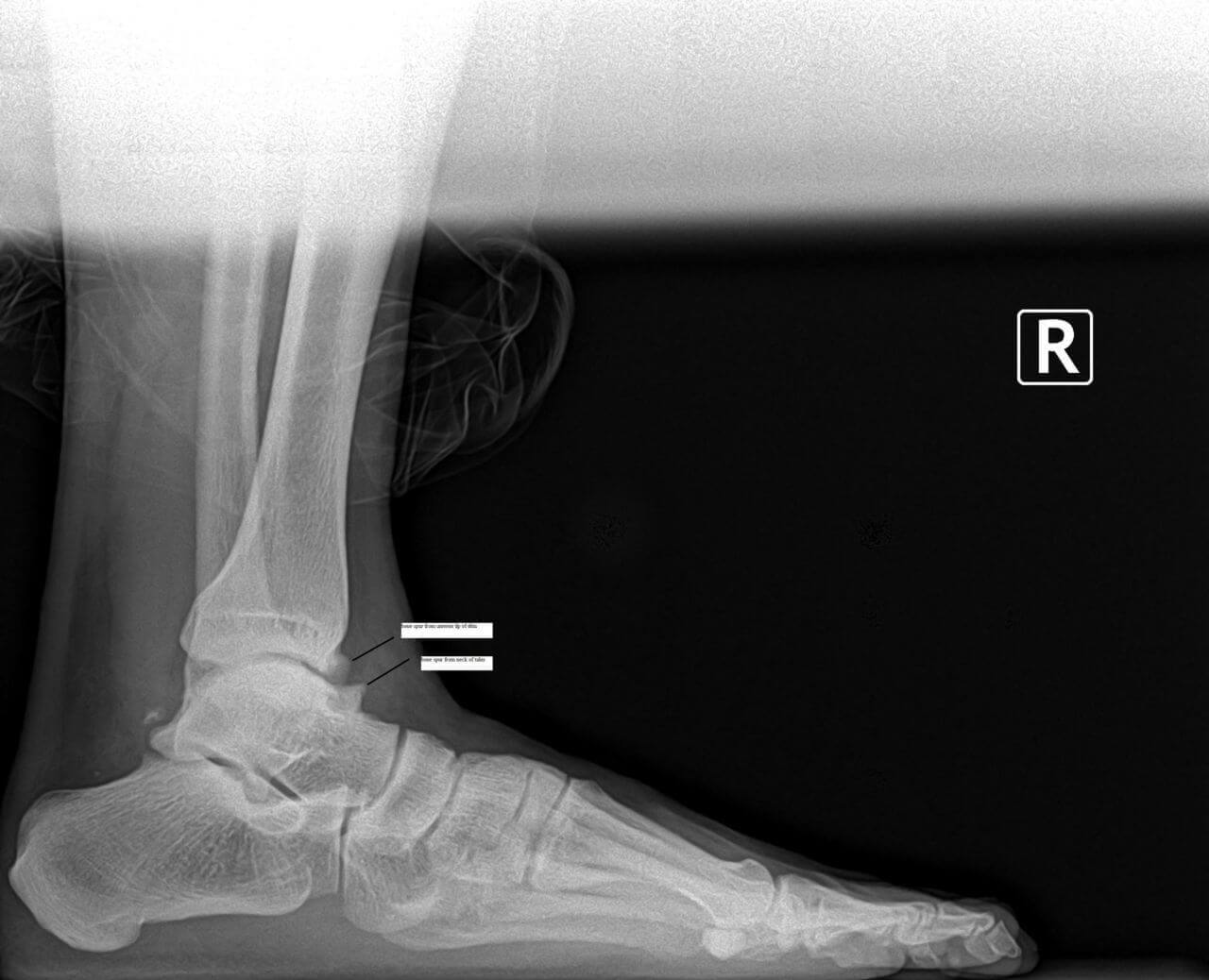
Regarding post-surgical home recommendations and ideas, don’t forget that there are things to do at home that we always forget or do not plan for. For example, taking your family members to appointments school or etc. This can be a tough one. If you’re the sole parent taking care of your children, then some people will wait until a relative or another family member can fly in to help out; or they may live close enough where they can simply come over as needed.
Foot surgery timing can sometimes work better with a college break - like Christmas break or summer break. Sometimes it’s a good idea to wait to have surgery until you have enough help that all your family’s needs can be taken care of but there’s also the needs of the surgery patient themselves. Discuss this with your surgeon, each different type of foot surgery and the recuperation and post op time off your feet or in a walking boot will be different.
If you are considering bunion surgery or other foot surgery, please let us know if you would like a surgical consultation.
Give us a call today at 425-391-8666 or make an appointment online today.
Dr. Timothy Young Talks About Using Crutches After Foot Surgery
It may be helpful to have your house set up for easy navigation and getting around.
For example, if you’ve got crutches a scooter or a walker, then practice ahead of time and make sure it will all work in your location. If you’ve got a couch downstairs and you don’t want to go up and down your stairs you may want to plan on setting up some type of a bed on your couch on the main floor. If you have to go up and down the stairs, some of our patients will go up and down on their "rear-end" so that they don’t have to try and balance with crutches.
We like to go over these details and more at your "preop" appointment.
We are happy to further discuss in person, if you would like to see myself Dr. Timothy Young or my partner Dr. Brandon Nelson. Give us a call at 425-391-8666 or make an appointment online.




